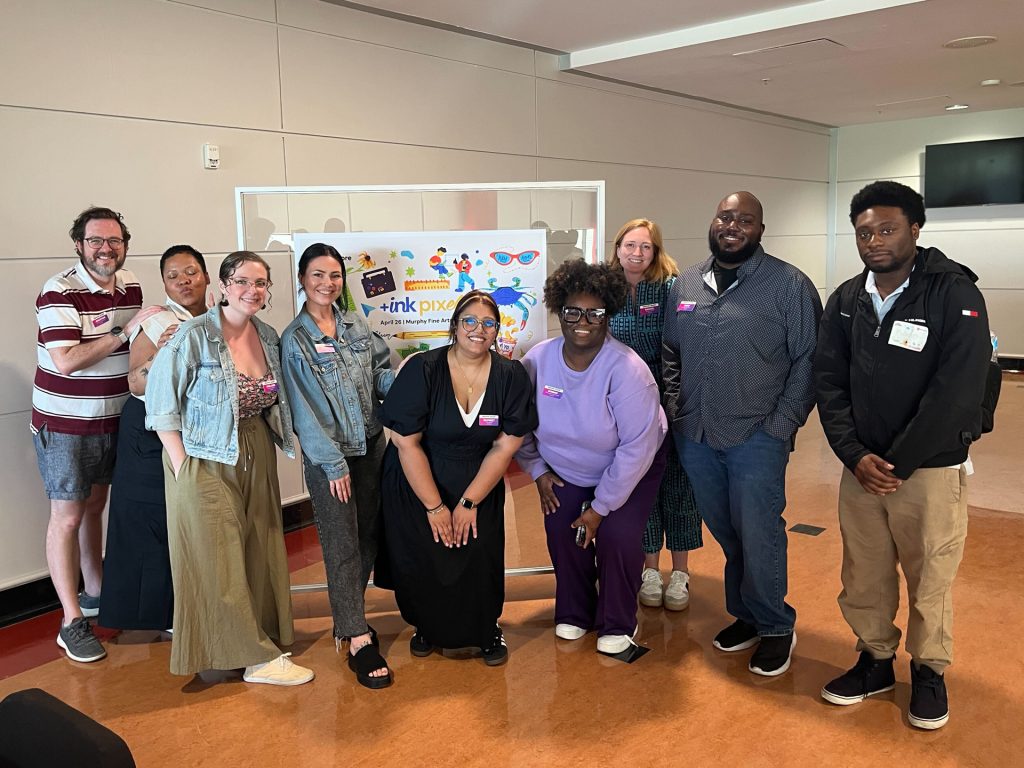One: Dissolve
The key to designing for listening is to realize that it is not quantitative. It is not about what it looks like, but about how long a user is listening. It is not about the type, the pixels, or the grids that we love so much, but about how the user feels when they are listening. Users want to be able to open a mobile or web app and start listening right away. Much like a high-quality, award-winning loudspeaker, it’s designed not to be seen and a user will often pay more for a seamless experience.
The challenge is that users are busy—they’re multi-taskers—and user interfaces can compete for their attention, so we need a different approach.
Two: Flow
In not designing a visual experience, the goal is to instead design a flow that will keep the user engaged. A ‘flow’ can be described as a structure or a language similar to what you would find in music. Just as verses, choruses, and bridges combine to create the flow of a song, the elements of good audio design combine to create an engaging listening experience. In that way, success is already programmed into the user experience.
“So much of what we know, and what we think, and what we feel, and what we remember is affiliated with how it all sounded.” — Colonel Chris Hadfield
An app designed as a listening experience should be extremely basic—only what’s necessary and without anything to distract the listener. It needs to be as easy as turning on the radio. For example, NPR’s app, NPR One, is responsive and is made to be tucked away behind another browser tab if you are listening to the radio while at work.
Three: Complement
The final concept to designing for listening is learning how to correctly read the audience. Like a good DJ, being able to read and to respond appropriately to the listener makes a better experience. People are busy and listening is often a parallel activity, so the challenge is to engage the listener by delivering the right programming all the time. Users’ habits—how or when they listen—are subtle signals that can help us deliver the best content.
The challenge is that NPR gives away their formula. The Application Program Interface (API) is available for free, which means anyone can take it, use it, remix it, and even make money off of it. A lot of people do the latter, but what they don’t have is the science or the algorithms behind the experience. Programs like Pandora use metadata to deliver a playlist, but not always in a way that equals what the user had in mind. The human element that NPR has created, of metadata and experience, is what makes a difference.
Q&A with Benjamin Dauer
What’s the Future of Public Radio?
In the future, public radio (especially NPR) will connect you to a handcrafted, personalized stream of local and national stories, both from shows you like and some we’ll surprise you with. You’ll be informed, entertained and connected to your community in a way that fits your life.
What is the biggest hurdle to design around?
NPR headquarters operates independently from local stations, but local stations do have needs that we try to address. For example, they want the functionality of listeners being able to donate money within the app while ensuring those funds stay local. A workaround hasn’t been figured out just yet, but little steps like linking to a donate page on website are a push in the right direction.
What advice would you give to designers working with nonprofits who might be against riskier design moves?
Educate the stakeholders. “Design is education.” Don’t show them how it looks, but how it will work. Show them a working example whenever possible to help support your reasoning.
As a designer, how do you handle a bad stakeholder review?
Beer! Take your ego out of it. It’s not really about you. In the case of NPR, it’s about the listener. I think about how I can give the listener that thing they want with all of these other crazy requirements.
Shannon Crabill is a New Media Specialist at T. Rowe Price. Outside of the Internet, you can find her dancing, riding her motorcycle and binge-watching home improvement shows on HGTV. Tweet her at @shannon_crabill.
Mitchell Cole is the web sales manager at Service Photo Supply. Most of his free time is spent indulging in some sort of gaming, controller or dice never far from reach. Find him on Twitter at @mc_mittens.

